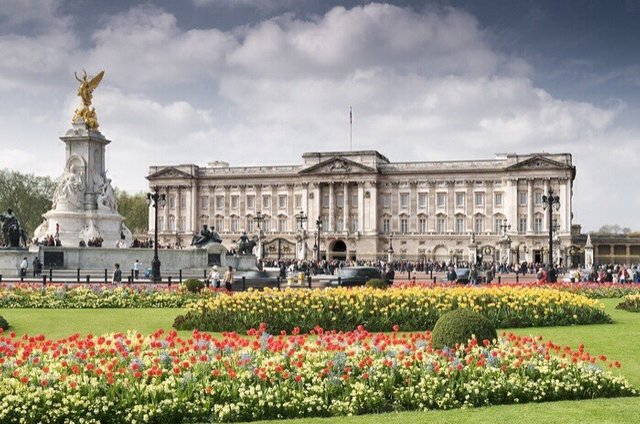[URL=http://www.radikal.ru][IMG] [/IMG][/URL]
[/IMG][/URL]
Entry to Buckingham Palace is via Ambassador's Court on Buckingham Palace Road. The Grand Hall is on the original site of the old entrance hall, dominated by the Grand staircase aptly named, because of its winding proportions and floral gilt-bronze balustrade.
As you walk through the Guard Room note the Gobelin tapestries lining the walls. The vibrantly coloured silk walls in the Green Drawing Room provide the perfect compliment to the beautifully coved and guilded ceiling. This is the site of Queen Charlotte's salon. In the splendid scarlet and gold Throne Room you can see the chairs used at the coronation of Her Majesty The Queen in 1953. The magnificent Ballroom extending to 122 feet in length was opened in Queen Victoria's reign in 1856 to celebrate the end of the Crimean war.
In the picture gallery designed by Nash are wonderful art treasures by Rubens, Rembrandt, Canaletto, Vermeer, and many others. This is a selection from the Royal Collection held in trust by the Queen for her successors and the nation and is regarded as Britain's National Heritage. In the State Dining Room the red silk damask on the walls makes a fitting background to the state portraits of Kings and Queens from George III to George IV. The regency dining chairs were purchased by the Prince Regent in 1813 for his home at Carlton House.
As you pass through the Blue Drawing Room, another of Nash's stunning rooms, note the thirty fake onyx columns and the Sevres porcelain table which was made for Napoleon. From the semicircular bow window of the domed Music Room you will have a good view of the garden and grounds. The Archbishop of Canterbury has christened four royal babies in this room. Perhaps most magnificent of all is the White Drawing Room, furnished with French antiques and English cut glass chandeliers suspended from the beautiful ceiling, the delicate colours of the furnishings standing out against the gold walls. The Minister's stairs at the end of the hall links the principal floor of state rooms to the Marble Hall, which is the heart of the old Buckingham House. Clad in Italian marble it contains some fine sculpture, including three groups by Antonio Canova.
The History of Buckingham Palace began in 1702 when the Duke of Buckingham had it built as his London home. The Duke's son sold the house in 1761 to George III, it was renamed “Queen's House” in 1774 as Queen Charlotte resided there. When it passed to George IV in 1820, Nash was commissioned to make alterations to the palace. The main block was retained but a new suite of rooms was added facing west into the garden, doubling the size of the building. The French Neo Classical style was the influence for the design. The re-modelled state rooms remain unchanged from Nash's original design.
Queen Victoria was the first monarch to take up residence in Buckingham Palace in 1837. Once again extensive changes took place, one of these was to have the huge arched gateway removed to Tyburn, where it remains, known as Marble Arch.
Today Buckingham Palace is used not only as the home of The Queen and The Duke of Edinburgh, but also for the administrative work for the monarchy. It is here in the state apartments that Her Majesty receives and entertains guests invited to the Palace.
Authors get paid when people like you upvote their post.
If you enjoyed what you read here, create your account today and start earning FREE STEEM!
If you enjoyed what you read here, create your account today and start earning FREE STEEM!